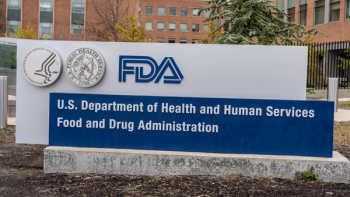
FDA Food Center Reorganization Puts Field Inspections in Limbo
Proposed realignment of the Office of Regulatory Affairs would impact oversight of drugs and medical devices as well.
In announcing major changes to the agency’s oversight of foods and nutritional products last week, FDA Commissioner Robert Califf cited the need to “transform” the agency’s field inspection operation. The contemplated realignment of the Office of Regulatory Affairs (ORA) would better focus this vast organization on “critical activities” for ensuring the safety of foods and other regulated products, including drugs, biologics, and medical devices.1 And more unified oversight for human foods will aim to clarify lines of authority between FDA centers and the agency’s investigational force of some 5,000 staffers in more than 200 offices and 13 labs around the country.
These changes come in the wake of an outcry over widespread shortages in infant formula supplies last year due to product contamination that led to the shutdown of a major manufacturing facility and product recalls. Field inspectors complained that FDA food center officials failed to respond effectively to warnings of bacterial contamination at Abbott’s formula plant. In response, FDA now proposes to integrate programs that set food safety standards with operations to handle outbreaks and recalls under a new deputy commissioner for human foods, reporting directly to the commissioner. The goal is to unify the various entities involved in oversight of food and nutritional products (including baby formula) into a single program, and to clarify relationships between field inspectors and headquarters in the process. Details were sparse, with FDA promising to provide more specifics on planned changes at the end of February.
The proposed changes will be tricky to accomplish, as Califf and principal Deputy Commissioner Janet Woodcock indicated at a briefing with reporters earlier this week to announce plans for the elevated foods center. Woodcock cited ongoing efforts to modernize the agency’s IT workflow management system to eventually establish a common platform for all regulated product centers to communicate with ORA, moving away from using multiple different systems for such interactions. Other initiatives involve establishing a clear inventory of the 600,000 various sites overseen by FDA inspectors and unifying state and local food safety partnership functions under the new program. But making significant changes in “how that all works,” Woodcock admitted, would be slow to come without additional resources.
Funding to expand or improve FDA’s food regulatory programs, however, suffers from limited budget appropriations and little support from industry-paid user fees. The Food Safety Modernization Act was adopted in 2011 in response to multiple food contamination outbreaks across the country, but only passed Congress by limiting penalties and fees on farmers and food processors—unlike the hefty fees paid by drug and biotech companies. The food industry provides FDA with a mere $10 million a year for facility reinspections, product recalls, and for certain food import activities. An added complication is that much of FDA’s food safety inspection work involves state and local officials, partnerships that Califf said will continue and will be strengthened.
ORA overhaul in works
Further realignment of ORA’s operating structure is not a new idea, as it was already implementing significant changes in how it oversees and enforces standards for drug, biologic, and medical product manufacturers when the agency had to make major adjustments in response to the global COVID-19 pandemic. ORA’s Program Alignment initiative for drugs and biologics aimed to move away from generalist inspectors to cadres of specialists trained to better evaluate the more complex medical products moving through the R&D pipeline. Then, as the spreading pandemic shut down travel and on-site plant visits, FDA shifted to virtual, remote oversight of manufacturers and research sites, limiting field inspections to “mission critical” applications and serious safety situations. Regulatory authorities also adopted more mutual recognition agreements with trusted foreign regulatory partners to share the burden of ensuring compliance of regulated facilities in their regions. FDA officials have indicated that many of these efficiencies may remain in effect even as the pandemic wanes.
Meanwhile, Califf’s announcement of the “key elements of a unified human food program” called for “reimagining” ORA, but provided only a vague outline for changing operations by “improving risk prioritization,” “modernizing core operations,” and “creating operational efficiencies.” As noted above, more details to come. And while Califf noted that agency staffers support plans to update ORA operations, he and others acknowledged that more detailed discussion of any changes with the agency’s vast inspection cadre is necessary before making any changes.
Some policymakers want to split FDA into two entities, one overseeing food and another regulating drugs and medical products. That would require a big boost in federal funding for the two entities and further expansion and overhaul of the field force. And it ignites debate over where to put oversight of animal drugs, dietary supplements, tobacco, and other consumer products. Many safety experts and consumer advocates continue to press for more significant change at FDA, but this latest shuffling of operations may suffice.
Reference
Newsletter
Lead with insight with the Pharmaceutical Executive newsletter, featuring strategic analysis, leadership trends, and market intelligence for biopharma decision-makers.




